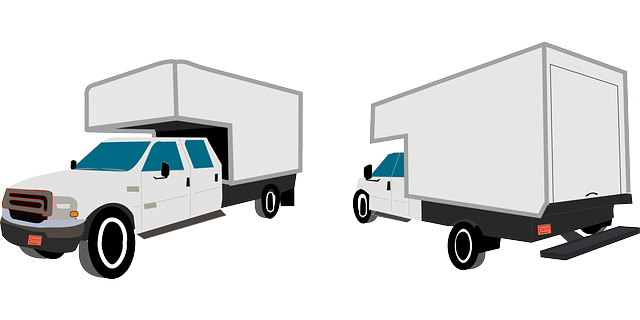Looking to register your car in California? Navigating the process can seem daunting, but with the right preparation, it’s a smooth ride. This guide breaks down every step of registering a vehicle in California, from understanding the requirements to completing the DMV VIN verification. We’ll walk you through gathering essential documents, scheduling an appointment at your local DMV, and finishing the registration application. Get ready to hit the road legally!
- Understanding the California Car Registration Process
- Gather Required Documents for DMV Vin Verification
- Schedule and Visit Your Local California DMV Office
- Complete the Vehicle Registration Application Form
- Pay the Necessary Fees and Receive Your Registration Papers
Understanding the California Car Registration Process

Understanding the California Car Registration Process
In California, registering your vehicle is a crucial step that involves several key processes. It begins with gathering essential documents, including proof of ownership and insurance. Once these are in order, you’ll need to visit a local Department of Motor Vehicles (DMV) office or utilize their online services for the next step: vehicle identification number (VIN) verification. This process ensures that your car’s details match the information on record, enhancing security and preventing fraud.
A mobile vin verifier or even a simple vin inspection can facilitate this verification, making it easier than ever to register your vehicle. Simply providing the VIN, along with other required details, allows DMV staff or online systems to cross-check and confirm the vehicle’s history, ensuring it’s safe to hit California’s roads. After successful verification, you’ll be on your way to securing a registration certificate for your new or transferred vehicle.
Gather Required Documents for DMV Vin Verification

To register your car in California, you’ll need to go through a process known as DMV VIN verification. Before heading to the DMV, make sure you gather all the necessary documents for a smooth experience. Essential papers include your vehicle’s registration certificate from the previous state (if applicable), proof of insurance, and a valid driver’s license. Additionally, you’ll require the Vehicle Identification Number (VIN) report, which can be obtained through a vin inspection or by checking your car’s frame or engine. For convenience, consider arranging for a mobile vin verification service to have your VIN information ready before visiting the DMV.
Schedule and Visit Your Local California DMV Office

Before you begin the registration process, it’s crucial to schedule and visit your local California DMV office. This ensures that you have all the necessary documents and information on hand. The DMV offers various services, including vehicle registration, title transfers, and critical steps like a DMV VIN verification. During your visit, you’ll need to present your car’s unique Vehicle Identification Number (VIN) for inspection, which can be conveniently done through a mobile vin inspection or mobile vin verifier service.
This step is essential as it helps verify the vehicle’s history and ensures that it meets all legal standards. By taking care of these formalities in advance, you streamline the registration process, making it faster and less stressful. Remember to check the DMV’s operating hours and bring along your required documents, including proof of insurance, to avoid any delays on the day of your visit.
Complete the Vehicle Registration Application Form

To begin registering your car in California, start by obtaining a Vehicle Registration Application Form from the Department of Motor Vehicles (DMV) or downloading it from their official website. Fill out this form completely and accurately. One crucial step is to have your vehicle’s VIN (Vehicle Identification Number) verified. This process ensures the accuracy of your car’s details and can be done through a DMV-approved vin inspection, even with a mobile vin verifier for added convenience.
The form will require you to provide extensive information about your vehicle, including its make, model, year, and color, along with your personal details such as name, address, and driver’s license number. Ensure that all the information is correct before submitting the application. The DMV offers various methods to submit the completed form, typically accepting it online or by mail.
Pay the Necessary Fees and Receive Your Registration Papers

After completing your vehicle’s necessary inspections and ensuring all documentation is in order, it’s time to pay the fees for registration. The California Department of Motor Vehicles (DMV) requires several payments, including a registration fee, car tax, and potentially other charges depending on your vehicle’s emissions status. You can opt for a one-time payment or choose to set up a payment plan if eligible. Upon processing your application, the DMV will conduct a VIN verification, cross-referencing your vehicle’s unique identification number (VIN) with their records to ensure its authenticity and history.
Once all fees are paid, you’ll receive your registration papers, which officially recognize your vehicle as legally registered in California. Keep these documents secure and up-to-date, as they’re essential for future interactions with the DMV or law enforcement. You may also consider a mobile vin inspection or using a mobile vin verifier to streamline this process, ensuring a smoother transition into California’s regulatory framework.
Registering a car in California is a straightforward process, but it requires attention to detail. By understanding the steps involved, gathering the necessary documents, and completing the DMV VIN verification, you can ensure a smooth registration experience. Remember to schedule an appointment at your local California DMV office and bring all required paperwork for a swift and efficient transaction.
